Are you looking for some exciting mind games to play on friends? Want to challenge their perception and have a good laugh? We’ve compiled a list of 20 mind-blowing games that will keep your friends guessing and entertained. These mind trick games to play with friends are perfect for parties, gatherings, or just a casual hangout. From simple mind games to play on friends to more complex psychological tricks, this list has it all. Let’s dive into these fun mind games to play on friends and discover how you can become the master of mental manipulation!
- The 1089 Trick
- The Magic Square
- The Invisible Deck
- The Mind Reading Calculator
- The Stroop Effect Game
- The Impossibly Twisted Arm
- The Matchstick Puzzle Challenge
- The Unbeatable Tic-Tac-Toe Strategy
- The Monty Hall Problem
- The Rubber Pencil Illusion
- The Invisible Touch
- The Memory Palace Game
- The Cocktail Party Effect
- The Zeigarnik Effect Challenge
- The Barnum Effect Personality Test
- The Anchoring Bias Game
- The Confirmation Bias Experiment
- The False Memory Implantation
- The Cognitive Reflection Test
- The Prisoner’s Dilemma Game
1. The 1089 Trick
This mathematical mind game to play on friends is a great way to impress your pals with your apparent psychic abilities. Ask a friend to choose a three-digit number where the first and last digits differ by at least two. Then, have them reverse the number and subtract the smaller from the larger. Finally, they should reverse the result and add it to the unreversed result. The answer will always be 1089! This trick works due to the mathematical properties of the numbers involved, and it’s a perfect example of how simple mind games to play on friends can be incredibly effective.
2. The Magic Square
Challenge your friends to create a 3×3 grid where all rows, columns, and diagonals add up to 15. This mind trick game to play with friends seems impossible at first, but there’s a simple strategy. Start with 5 in the center and fill in the remaining numbers strategically. Once you reveal the secret, your friends will be amazed at how easy it becomes. This game is an excellent way to demonstrate how our minds can overcomplicate simple problems.
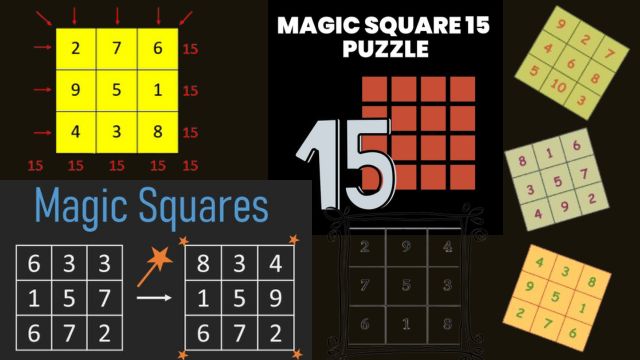
3. The Invisible Deck
This classic magic trick is one of the most impressive mind games to play on friends. Using a specially prepared deck where half the cards are secretly reversed, you can seemingly produce any card your friend names from an “invisible” deck. The key is in the setup and presentation. Practice this trick to perfection, and you’ll leave your friends scratching their heads in disbelief.
4. The Mind Reading Calculator
Here’s a fun mind game to play on friends that combines math and apparent mind-reading abilities. Use a calculator and some clever math to seemingly predict the result of your friend’s calculations. The trick involves manipulating the order of operations to ensure a specific outcome. This game demonstrates how our minds can be tricked by the apparent complexity of calculations.
5. The Stroop Effect Game
This psychological experiment turned mind trick game to play with friends is both entertaining and educational. Create cards with color names written in different colored inks (e.g., “RED” written in blue ink). Challenge friends to quickly say the color of the ink, not the word itself. This game demonstrates how our brains process conflicting information and is a great way to show the power of automatic cognitive processes.
6. The Impossibly Twisted Arm
This visual illusion is a great simple mind game to play on friends. It involves appearing to twist your arm in an impossible way. The trick lies in careful positioning and misdirection to create the illusion of an extra joint. Once you master this trick, you can amaze your friends with your apparently superhuman flexibility.
7. The Matchstick Puzzle Challenge
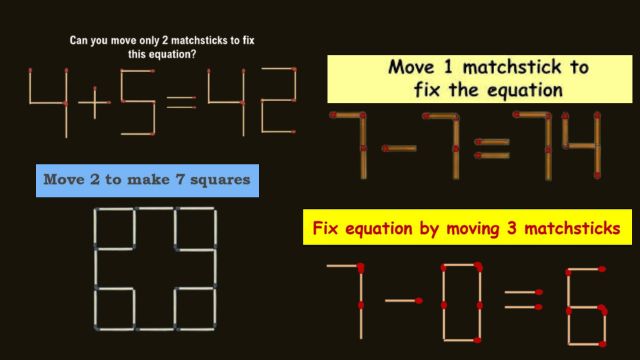
The Matchstick Puzzle is a clever and engaging mind game to play on friends to test their problem-solving skills and spatial reasoning. The game involves arranging matchsticks to form a specific geometric shape, like a square or triangle. The challenge for your friends is to move a predetermined number of matchsticks to create a new shape, often requiring them to think outside the box.
What makes this puzzle so intriguing is how it highlights a common cognitive phenomenon—our tendency to get stuck in rigid thought patterns. When presented with a problem, we often approach it with preconceived notions about what solutions are possible, which can make simple answers seem far more difficult than they really are. The Matchstick Puzzle forces participants to break free from these mental barriers and adopt a fresh perspective.
For instance, a common version of the puzzle may involve a square made of four matchsticks. The challenge is to form a different shape, like a triangle, by moving only a couple of sticks. While the solution is simple, many will initially struggle because they assume the original structure must stay somewhat intact. This game not only sharpens problem-solving skills but also reminds players that sometimes the key to success lies in rethinking their approach entirely.
So, the next time you’re with friends, break out this matchstick challenge. It’s a fun way to stimulate critical thinking, spark creativity, and enjoy a lighthearted competition.
8. The Unbeatable Tic-Tac-Toe Strategy
Turn the classic childhood game of Tic-Tac-Toe into an impressive mind trick game to play with friends. While it may seem like a simple game, there’s a perfect strategy that, once mastered, will guarantee you never lose—no matter who you’re playing against. The secret lies in understanding key positions on the grid and forcing your opponent into making moves that lead to your win or, at the very least, a draw.
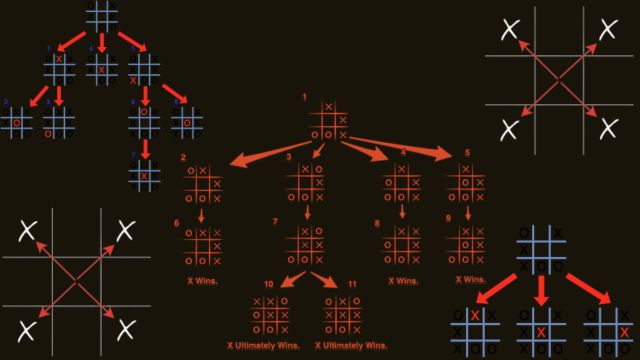
The Strategy Explained
Tic-Tac-Toe is played on a 3×3 grid, and the goal is to align three of your marks (either X’s or O’s) in a row, column, or diagonal. What most people don’t realize is that the game can be mathematically solved, meaning if you play perfectly, you’ll never lose.
Here’s the strategy to ensure you remain unbeatable:
- Start in the Center: If you’re the first player, always place your mark (X) in the center of the grid. The center is the most powerful position because it gives you access to multiple winning lines—both diagonals and the center row or column. If you control the center, you have the upper hand.
- Take the Corner: If your opponent starts in the center, your best response is to take one of the corners. This move allows you to set up multiple paths for a win, while limiting their chances. If you start second and they don’t choose the center, immediately take the center for yourself.
- Block and Set Traps: As the game progresses, your goal is to block your opponent from forming a line of three, while simultaneously setting up two potential winning lines of your own. This forces them into a position where they can only block one of your winning moves, allowing you to claim victory on the next turn.
- The Fork Strategy: One of the most effective techniques is setting up a “fork,” where you create two opportunities to win simultaneously. This puts your opponent in a lose-lose situation since they can only block one of your moves.
Once you master these strategic positions and forcing moves, you can challenge anyone to a game of Tic-Tac-Toe, knowing that you’ll either win or force a draw. Your friends will be amazed when they realize they can’t beat you, no matter how hard they try. It transforms a seemingly simple game into a fun and impressive mind trick, leaving your opponents baffled by your flawless play.
11. The Barnum Effect Personality Test
The Barnum Effect is a fascinating psychological phenomenon that you can use as a clever verbal mind game to play on friends. It involves presenting a vague and general personality description that feels personal and accurate, even though it could apply to almost anyone. This effect demonstrates how easily people can be convinced that generic statements reflect their unique traits, and it’s a great tool to explore the psychology of personality and self-perception.
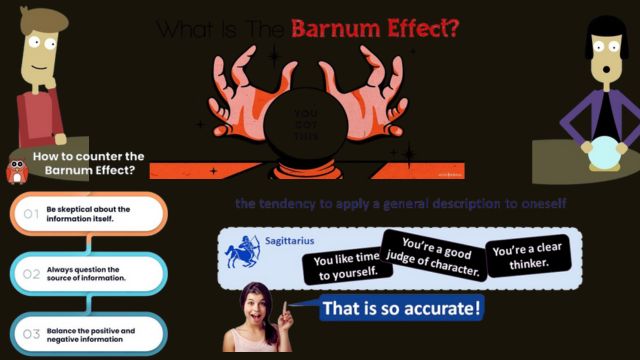
The Test in Action
To perform this mind game, you can start by telling your friends that you’re going to give them a personalized personality reading. The key is to craft a set of statements that are broad enough to apply to a wide range of people, but specific enough to seem insightful. For example:
- “You have a strong need for others to like and admire you, but at the same time, you can be critical of yourself.”
- “You have a lot of potential that you haven’t yet fully used.”
- “At times, you’re sociable and outgoing, but in other situations, you prefer to be more reserved.”
- “While you have weaknesses, you’re generally able to compensate for them.”
- “You value honesty and dislike people who are insincere.”
These kinds of statements tend to resonate with almost everyone because they describe traits that most people believe apply to them in some way. After delivering the reading, ask your friends how accurate they think it is. Most will be surprised at how spot-on it feels, even though the statements are intentionally vague.
The Explanation
The Barnum Effect, also known as the Forer Effect, occurs when people believe that a generic personality description applies specifically to them. This happens because we naturally look for meaning in ambiguous information and tend to focus on what resonates with our own experiences, while ignoring what doesn’t. The effect is named after P.T. Barnum, a famous showman who was known for making broad statements that appealed to everyone.
In the context of this personality test, your friends are likely to interpret these vague statements as accurate because they unconsciously fill in the gaps with their own details. They will relate each statement to personal experiences, memories, or emotions, making the reading feel uniquely tailored to them.
The Psychology Behind It
The Barnum Effect highlights several interesting aspects of human psychology:
- Confirmation Bias: People tend to pay attention to information that confirms what they already believe about themselves, while disregarding anything that doesn’t fit. This bias makes the personality reading seem more accurate than it really is.
- Self-Serving Bias: The vague statements are often positive or flattering, which aligns with most people’s desire to see themselves in a good light. This makes them more willing to accept the reading as true.
- The Desire for Personal Insight: Many people seek a better understanding of themselves, so when offered a personality reading, they are eager to believe that it holds valuable insights, even if it’s highly generalized.
Discussing the Barnum Effect
After revealing how the Barnum Effect works, you can discuss the broader implications with your friends. This effect is often used in horoscopes, personality tests, and even fortune-telling. By understanding how it works, people can become more aware of how easily we can be influenced by vague information, and how our need for personal validation can sometimes cloud our judgment.
The Barnum Effect is a fun and thought-provoking way to explore human psychology, and it’s a perfect game to spark discussions about how we perceive ourselves and the world around us.
9. The Monty Hall Problem
The Monty Hall Problem is one of the most famous probability puzzles, and it’s an excellent verbal mind game to play on friends. The puzzle is named after the host of a game show, and it challenges the way we intuitively think about probability and decision-making. Although the correct solution defies common sense, it can be easily explained with logic, making it a perfect puzzle to surprise and impress others.
The Scenario
Imagine you’re on a game show with three doors in front of you. Behind one door is a grand prize—let’s say a car—and behind the other two doors are goats. You don’t know what’s behind any of the doors, but the host (Monty Hall) knows where the car is.
Here’s how the game works:
- You choose one door, say Door 1.
- Before revealing what’s behind your chosen door, the host, who knows what’s behind all the doors, opens one of the other two doors, say Door 3, revealing a goat.
- Now, you’re given a choice: stick with your original pick (Door 1) or switch to the remaining unopened door (Door 2).
Most people think that since there are only two doors left (one with a car and one with a goat), the odds are now 50/50, and switching doesn’t make a difference. However, this is not true.
The Explanation
At the beginning, you had a 1 in 3 chance of picking the car and a 2 in 3 chance of picking a goat. Once the host reveals a goat behind one of the other doors, your initial odds don’t change—they stay the same.
- If you initially picked the car (which happens 1/3 of the time), switching would make you lose.
- If you initially picked a goat (which happens 2/3 of the time), switching would make you win because the host’s reveal forces the remaining door to have the car.
In other words, by switching, you’re capitalizing on the 2/3 chance that you initially chose a goat. If you always switch, you’ll win 2 out of 3 times!
Why It’s So Mind-Bending
The Monty Hall Problem is so fascinating because it contradicts our gut feeling. Most people mistakenly believe that after one door is revealed, the odds reset to 50/50, but in reality, the original odds still apply. The puzzle challenges our understanding of probability and decision-making, showing that sometimes our intuition can lead us astray.
So, next time you’re with friends, present them with this classic probability puzzle. Ask them if they would switch doors, then explain why switching actually gives them a better chance of winning. It’s a great way to spark discussion and leave everyone marveling at the surprising nature of probability!
16. The Zeigarnik Effect Challenge
The Zeigarnik Effect is a compelling psychological phenomenon that shows how our brains are more likely to remember unfinished tasks than completed ones. You can turn this into a fun and revealing mind game to play on friends, demonstrating how our memory works in surprising ways. By starting several puzzles, games, or tasks without finishing them, you can later test your friends’ recall and show how the incomplete activities linger in their minds. This is not only a great way to explore memory and cognition but also a fantastic conversation starter about psychology.
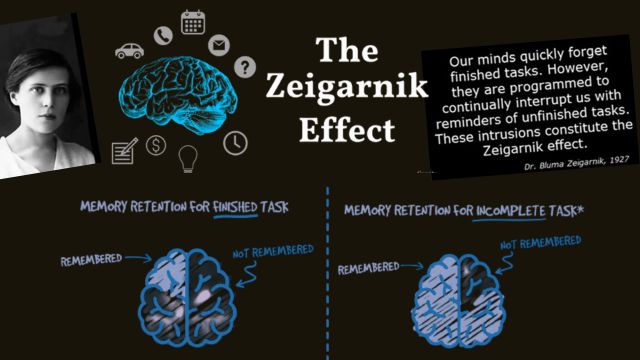
The Challenge in Action
To conduct the Zeigarnik Effect Challenge, begin by presenting your friends with a few simple tasks, games, or puzzles. The key is to ensure that none of these activities are fully completed. For example:
- Start a jigsaw puzzle but leave a portion unfinished.
- Play a game of Tic-Tac-Toe or a simple card game, but stop halfway through.
- Give them a math or word puzzle, then interrupt before they can solve it.
After moving on from these activities, engage in other unrelated tasks or conversations. Then, after a little time has passed, ask your friends to recall what they were doing earlier. You’ll notice that they are more likely to remember the unfinished tasks much more vividly than any tasks they may have completed.
The Explanation
The Zeigarnik Effect was first observed by Russian psychologist Bluma Zeigarnik, who discovered that people tend to have better recall for tasks that are left incomplete. The idea is that unfinished tasks create a sense of tension or cognitive dissonance in our minds, which keeps us mentally engaged with them even after we’ve stopped working on them.
When a task is left incomplete, our brain continues to process it in the background, almost as if it’s trying to resolve the unresolved issue. This tension keeps the memory of the unfinished task more active and accessible. Once a task is completed, however, the brain tends to “close the loop” and the details of the task are more easily forgotten.
Why It’s So Fascinating
The Zeigarnik Effect is particularly interesting because it challenges our intuitive sense of memory. Most people assume that completing a task should make it more memorable, but the opposite is true when it comes to recall. Our minds are wired to focus on what’s unresolved, constantly reminding us to return to unfinished business.
This effect can explain why people often find it hard to focus when they have too many incomplete tasks or why they keep thinking about work even after leaving the office. The brain doesn’t easily let go of things that are left hanging!
The Psychology Behind It
Several psychological principles come into play with the Zeigarnik Effect:
- Cognitive Tension: The mind dislikes leaving things unresolved. Unfinished tasks create cognitive tension, which motivates us to either complete them or keep them in mind until we do.
- Memory Processing: When a task is incomplete, the brain treats it as “open,” constantly processing it in the background, which strengthens memory retention. In contrast, when a task is completed, the brain categorizes it as “done,” freeing up mental resources and making it easier to forget.
- Attention and Focus: The Zeigarnik Effect also explains why people are better at focusing on tasks that require completion. It is one reason why multitasking, where tasks are left half-done, can create stress and cognitive overload.
Discussing the Zeigarnik Effect
After demonstrating this effect with your friends, it’s a great opportunity to delve deeper into how it applies in everyday life. You can discuss how it influences productivity, learning, and even marketing (think of cliffhangers in TV shows or advertisements that leave you wanting more). The effect is also relevant in education, where unfinished lessons or projects can enhance memory retention.
The Zeigarnik Effect Challenge is not only a fun game but also a powerful way to explore how our minds handle information and why some memories stick with us more than others. It’s an eye-opening insight into the quirks of human cognition and memory.
10. The Rubber Pencil Illusion
This simple mind game to play on friends is all about visual perception. Demonstrate how rapidly shaking a pencil can create the illusion that it’s made of rubber. This tricks the brain’s visual processing system and is a fun way to show how easily our senses can be fooled.
12. The Invisible Touch
Use suggestion and misdirection to make a friend feel a touch that never happened. This mind game to play on friends plays on the power of expectation and sensory illusions. It’s a fascinating demonstration of how our minds can create physical sensations based on anticipation alone.
13. The Memory Palace Game
Teach your friends the ancient technique of using spatial memory to remember long lists of items. This fun mind game to play on friends challenges them to memorize and recall increasingly complex sets of information. It’s not only entertaining but also a useful skill they can apply in real life.
14. The Prisoner’s Dilemma Game
Set up this classic game theory scenario to show how individual and group interests can conflict. This mind game to play on friends leads to fascinating decision-making processes and discussions about strategy, trust, and cooperation.
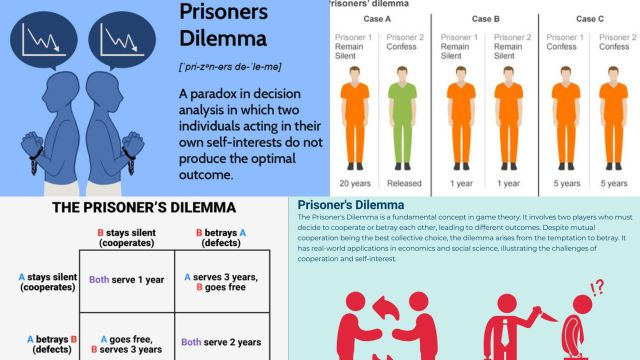
15. The Cocktail Party Effect
Demonstrate how the brain can focus on a single conversation in a noisy environment. Set up multiple conversations and challenge friends to follow just one. This mind trick game to play with friends showcases the brain’s incredible ability to filter information and focus attention.
17. The Anchoring Bias Game
Show how initial information influences subsequent judgments. Give different starting prices for an item and see how it affects friends’ value estimates. This mind trick game to play with friends reveals how easily our judgments can be swayed by initially presented information.
18. The Confirmation Bias Experiment
Present ambiguous information and observe how friends interpret it based on their pre-existing beliefs. This mind game to play on friends highlights our tendency to confirm our own ideas and can lead to interesting discussions about decision-making and belief formation.
19. The False Memory Implantation
Use suggestive questioning and fake photos to convince friends of events that never happened. This powerful mind trick game to play with friends demonstrates the malleability of memory and can be a starting point for discussions about the reliability of eyewitness testimony.
20. The Cognitive Reflection Test
Present friends with questions that have intuitive but incorrect answers, requiring careful thought to solve correctly. This fun mind game to play on friends tests the ability to override quick, instinctive responses and engage in deeper analytical thinking.
The bottom Line
These mind games to play on friends are not only entertaining but also offer insights into how our brains work. They challenge perception, memory, and cognitive abilities in fun and engaging ways. Remember, the key to these mind trick games to play with friends is to keep the atmosphere light and enjoyable. It’s all about having fun and marveling at the incredible capabilities (and occasional limitations) of the human mind.
So, gather your friends, choose your favorites from this list of simple mind games to play on friends, and prepare for an evening of mind-bending fun. Who knows? You might even learn something new about how your own mind works in the process!